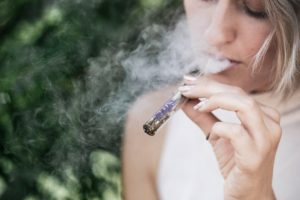By John Garvey
One of the world’s foremost medical marijuana researchers weighs in on cultivation, public health and much more.
“If you were stranded on a desert island and had to pick one plant to meet all your needs, this would be the best choice.”
– Ethan Russo, M.D.
Ethan Russo knows more about weed than anyone you know.
Physician and medical researcher Ethan Russo is one of the foremost medical cannabis/medical marijuana experts worldwide. Russo, who is board certified in neurology with specialized expertise in pediatric neurology, was the Senior Medical Advisor to GW Pharmaceuticals for 11 years (2003 – 2014). He has also been chairman of International Association for Cannabis as Medicine and president of the International Cannabinoid Research Society.
Russo is currently the director of R&D for the International Cannabis and Cannabinoids Institute (ICCI) in Prague.
So there.
In Russo’s April 9 webinar, “Making Cannabis Safer and Better,” (hosted by the ICCI), he discussed several key issues, including:
- Cannabis consumption & health
- Best practices for cultivation and quality assurance
- Medicinal properties of terpenoids and cannabinoids
- Public health and safety concerns associated with pesticides and heavy metals
- Plant classification
This month, we’re discussing six key takeaways on health and quality assurance. (All quotes are Russo’s unless otherwise noted.)
1) Residual pesticides in cannabis present “a clear and present danger.”
“Pesticide-contaminated products present a clear and present danger, particularly to young patients with epilepsy and other neurological conditions. We cannot wait and watch the results of carcinogen exposure years down the road.”
Due largely to the lobbying power of the tobacco industry, “There are no EPA guidelines on acceptable pesticide levels for any smoked product,” notes Russo. Noxious pesticides are especially common in black market cannabis.
From a public health and regulatory standpoint, Russo’s greatest concern is inadequate regulation and testing of pesticides used in cannabis cultivation.
“No current method is available to legally certify organic cannabis culture.”
Colorado mandates pesticide testing, but few if any other jurisdictions do. Legal cannabis in Washington analyzed and found to have alarming amount and frequency of pesticide residue.
2) Vaping is great, but quality product comes first.
Vaporizers, for all their merits, do not eliminate all harmful elements such as polyaromatic hydrocarbons and residual pesticides. By eliminating combustion, vaping provides a healthier route of consumption, but it doesn’t solve everything.
Plus, regulators aren’t scrambling to accredit a new route of medication delivery.
“It is going to be a hard road to get a vaporizer approved by the Food and Drug Administration or other regulatory bodies.”
On the other hand, the FDA will never recognize any smoked product as medicine. I will literally eat my shirt if I turn out to be wrong on this one.
3) For optimal effect, make it a priority to preserve terpenes/terpenoids.
“What we really need for optimal medical preparations are the kinds of [extraction] techniques that preserve [terpenoids].”
Even with CO2 extraction, terpenoid concentrations tend to decrease. Some terpenoids are more vulnerable than others. If you know anything about terpenes, you know their presence affects the psychoactive and physiological effects of cannabis.
- Pinene, for instance, is uplifting and offsets short-term memory loss, which is one side-effect of THC. Pinene-rich strains will be better for people needing to function at a high level cognitively and physically.
- By contrast, myrcene, the most common terpene in marijuana, has a relaxing, sedating effect. That generally makes myrcene-dominant cannabis undesirable for daytime use.
It’s worth reiterating that not only CBD but also certain terpenoids can have a buffering effect against undesirable traits of THC intoxication. These include discomfort, paranoia and short-term memory deficits.
4) Concentrates: To dab, or not to dab?
Butane extraction, in particular, concentrates not only THC (an obvious appeal to certain recreational users) but also any contaminants. It also strips away terpenoids. People who use concentrates quickly develop high tolerances and are more likely to experience withdrawal symptoms than people who smoke or vape flower.
Russo has concluded that smoking or vaping concentrates has no medical purpose. While they’re extremely effective for producing intoxication, nobody needs to get that high to achieve symptom relief.
Adults have the right to do as they like, but industry professionals should recognize that. Smoked or vaped concentrates are better at quickly delivering THC into the body than any other method. But they’re inferior from a medicinal standpoint.
5) Soil quality influences more than yields.
Russo noted that cannabis is a bio-accumulator, meaning it absorbs heavy metals from soils. This makes it highly valuable in bioremediation (hemp was used to cleanse the soil after the Chernobyl nuclear disaster), but it also raises public health concerns. If cannabis is grown in soil containing heavy metals it can pass those contaminants along to consumers. Soils should be tested for mercury and other heavy metals before they’re used in crop production.
6) Recreation vs. Medicine, in a nutshell:
Russo cited efficacy, safety, consistency and accessibility as “The Four Pillars of True Medicine.” In brief, here’s what each of those terms mean:
- Efficacy (as demonstrated by Phase I – III Randomized Controlled Trials, or RCTs)
- Safety (also proven, ultimately, by RCTs)
- Consistency (standardization of production techniques and testing)
- Accessibility (supply chain is efficient and regulated; costs aren’t prohibitive)
GW Pharmaceuticals has largely achieved this with the approval of the first cannabis-plant-based medicine. But sometimes the conversation gets pretty murky. Calling marijuana “medicinal” in many cases is indisputably correct; calling it “medicine,” without rigorous testing and standardization for specific conditions, is technically incorrect.
To continue moving the conversation forward, it would probably benefit advocates to be clear on the distinction between a plant with valid medicinal applications and a medicine in the literal sense.
Russo had plenty more to say about plant classification, cultivation and pharmacology that we’ll share next month. In the meantime, we’d love to hear your own thoughts on any of the above points.
Cannabis Enterprise Business Solutions
Talk to one of our reps to learn how our industry-leading point of sale and inventory management solutions can help keep your dispensary sprouting upward.
1-800-417-3030



